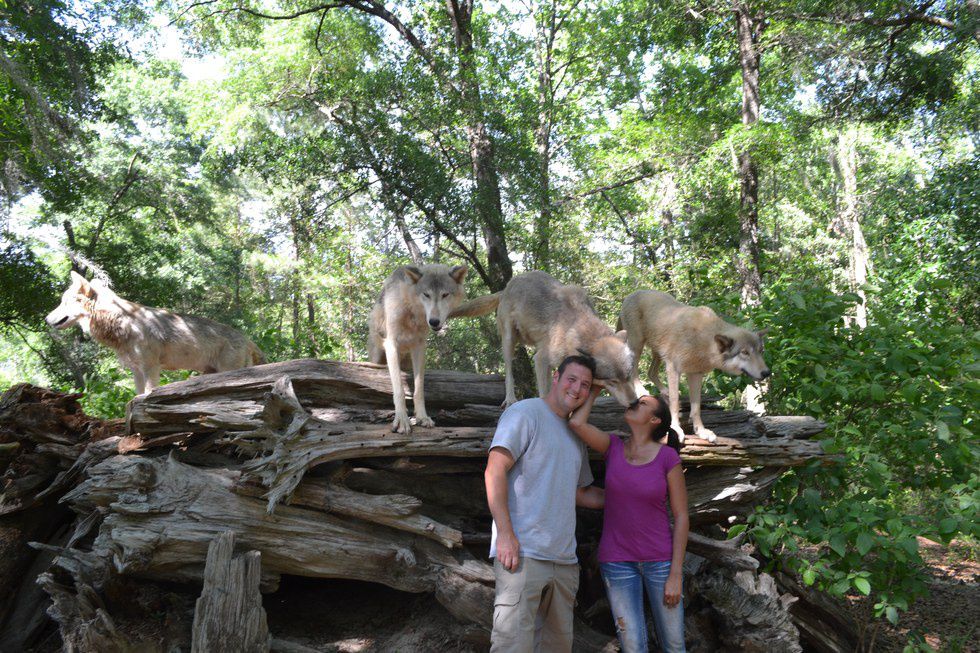We have all seen the Hollywood version of wolves. Everything to Little Red Riding Hood and The Grey. What do they have in common? They portray wolves as being big, man-eating animals that will stalk and hunt their human prey. In the movie The Grey, Liam Neeson spends most of the movie fending off a pack of angry, hungry wolves after being in a plane crash. But is this an accurate portrayal? No! Hollywood has caused a great amount of fear of the animals by people who don't really know much about the animal. In fact, wolves are quite timid and shy, and should you get a chance to run into them, you probably wouldn't have enough time to pull out your camera and take a picture because they would run away from you. If you did happen to run into them in the wild, then you were probably putting a lot of effort into finding them in the first place. Do attacks happen? Yes, but it is extremely rare and it happens in rare circumstances.
Let's take a closer look at the popular Gray Wolf. These wolves are very social animals just like we are! They have their own hierarchy within the pack, which usually consists of 6-8 wolves. You have your Alpha male and Alpha Female; the pair has the most freedom of the pack. They resolve issues within the pack, control resources, and keep the pack together. Most alpha pairs are monogamous and usually only the alpha pair will raise a litter successfully while the rest of the pack assists in raising the litter. Then you have the Beta which are second in command to the alpha. They play a more predominant role in assisting the alphas to raise their litter and they may even act as a surrogate parent while the parents are away. However, betas do tend to challenge to alpha's position for dominance. Last, you have the Omega who are at the bottom of the social hierarchy. They are the clowns of the pack being playful and helping to release the tension within the pack.
Wolves are here to do more than just kill and eat their prey. They also help with our ecosystem. If we didn't have wolves, then our world would become a vast amount of desert, being overridden with insects. But why would this happen? What difference do wolves make on the ecosystem? Wolves help regulate the population of vegetative animals such as deer, elk, moose, etc. Without wolves to keep the population under control, the vegetation would begin to disappear. They even affect the rivers. How? They change the behavior of elk and other prey and move them out of the valleys by the riverbanks and into more sheltered places. It allows the plants and vegetation to grow more luscious and trees to grow taller along the rivers. Having fewer elk increased the number of berries, which has been good for bears. It has allowed more food for rabbits and mice, which provides more food for eagles and hawks. More beavers have been able to eat the healthier trees, and their dams are able to provide shelters for other small animals. The dams and the trees’ deeper roots have made Yellowstone’s rivers healthier and swifter.
Currently, there are only 8,000 to 11,000 gray wolves in Alaska and 5,500 in 48 contiguous states. Why are there so few wolves? Because they are being killed off and hunted. There is no protection for wolves even though the population is dropping. It is legal to hunt these animals even though they are few in numbers. So in reality wolves aren't the big bad creatures that Hollywood portrays; they are really an animal that helps keep order within the ecosystem and have families that they raise away from the human population. If you would like to do more to help these endangered species or learn more you can visit www.seacrestwolfpreserve.org.





















